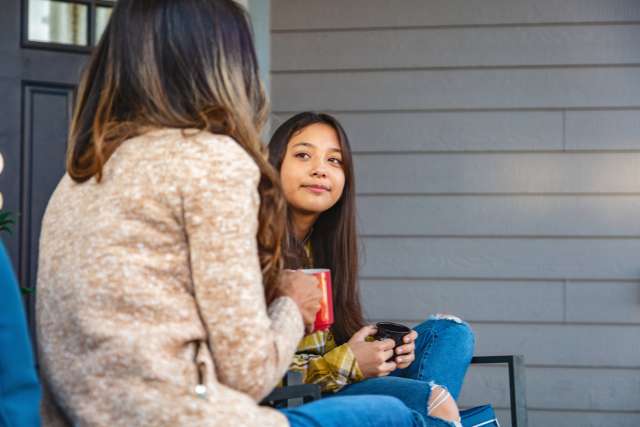Your daughter may be excited, nervous, embarrassed (or all of those) about the idea of puberty and the changes that come with it. As a parent, you may be feeling some of those same emotions.
But don’t let your own emotions or embarrassment get in the way of helping your daughter through this major life transition. If your daughter is about to experience puberty, you’re both in for some of the biggest changes yet.
When should you start talking about puberty?
The typical age range for puberty in girls is between 8 and 13, but it can happen earlier or later — and early puberty in girls is becoming more common. Many girls start the process by age 8.
Whether your daughter ends up being an early or late bloomer, you want to make sure she’s prepared. Ideally, you’ve been having frank conversations with your kids about bodies and how they function since they were little. But even if that’s not the case, it’s important not to shy away from the discussion now.
Girls are bombarded with lots of information — from friends, books, television, social media — and not all of it is accurate. Discussing puberty with your daughter is an opportunity to make sure she has the facts she needs to be prepared but not scared by her changing body.
Don’t wait until puberty hits to talk about it. Start the conversation early and continue it throughout the transition. If you (or your daughter) feel awkward broaching this topic, it can help to a get a book that explains puberty in a way that’s appropriate for her age. You can read it together. Or let her read it and then discuss it with you and ask questions afterward.
Help your daughter recognize the first signs of puberty
Knowing your body is about to go through a bunch of changes can be scary. Understanding exactly what those changes are — and why they’re happening — can help alleviate those fears.
Take the time to explain to your daughter how puberty comes with new hormones that spur the changes to her body.
Some early signs of puberty in girls include:
- Development of breast buds
- Growth of body hair
- Vaginal discharge
- Physical growth spurt
- Oilier hair and skin
- Mood swings and big emotions
Make sure she’s prepared for her first period
The main event of puberty for girls is the onset of menstruation. A girl’s first period typically occurs about two to three years after the first signs of puberty. But it’s important to reassure your daughter that getting it much sooner — or much later — is perfectly normal.
In addition to talking to your daughter about what to expect, make sure she’s prepared. Buy a variety of pads, tampons and period underwear so that she has lots of options. Help her put together a kit of supplies she can keep in her locker or backpack so that she’s always ready when her period arrives.
Keep the conversation going
Talking about puberty is never a one-and-done conversation. Make sure your daughter knows you’re happy to answer any questions that come up for her. If she doesn’t feel comfortable talking to you about some aspects of puberty, give her resources where she can find reliable information. This could include websites, books, her pediatrician or another trusted adult.
As your daughter continues to mature, you’ll want to keep the conversation going. Topics like sexuality, consent, sexually transmitted infections and pregnancy are ones you’ll need to tackle in the coming years.
Don’t shy away from these tough topics — even when you’re met with eye rolls (or worse!). Your daughter might not show it, but she will appreciate knowing that no topic is off limits and that she can come to you for guidance as she grows up.



